 Jungle Nymph Stick Bug (Heteropteryx
dilatata) (PSG-18) Jungle Nymph Stick Bug (Heteropteryx
dilatata) (PSG-18)
They are nocturnal. This specie is good for starters,
although takes a bet of work and a lot of patience
to hatch their eggs. The substrate must be at least
2 1/2 inches (6cm) deep and kept lightly moist at
all times. The best substrate to use is vermiculite
since it holds the water best. Its best to keep
them at the temperature of 24-26°C during day time,
and about 20°C during night time. Heteropteryx dilatata
has sexual reproduction, you need both males and
females if you want to breed them. Each egg is quite
large about 8.5 by 5.5 mm. The eggs have to be in
a dark place, temperature 24-26°C, and the humidity
around 70-80 %. When the nymph hatches after 10-14
month, it will come out already 1-1 1/4 inches (2.5-3cm)
long.
Females: are even more spectacular then
males. Females usually get about 6 inches (15cm)
long, and are very heavily build. Each female lays
about 100-150 eggs. After they starts to mature,
and get a green color, they will be a bet more violent
when they feel threatened. When disturbed the female
will curl her abdomen up over the back and point
the long thorny hind-legs backwards, widely spread.
If something comes between the legs she will fold
them together in a scissor like movement which will
lightly scratch the intruder. They will make loud
hissing noise using their small wings. Immature
females can change colors with differing degrees
of light and darkness. Every day antill they mature,
by day they can be pale beige, by night rich pinkish-tan.
If threatened they will drop to the ground as if
they were a stick or a leaf. The female will deposit
her eggs about 1 1/2 inches (4cm) deep in the substrate.
Males: are smaller than the females, get
up to 4 3/4 inches (12cm) long and are more slender.
Males have the same behavior but do not make the
hissing noise.
Diet: Bramble, Hawthorn, Rose, Mango (Mangifera indica), Hazel, Red/ Yellow Salmon
Berry.

Ova.
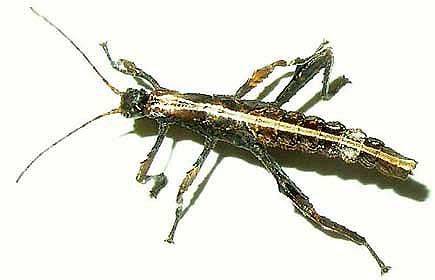 
L1 3 days old nymph.
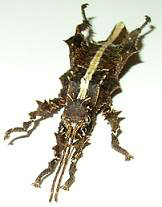 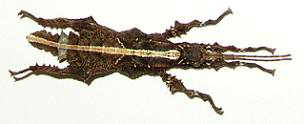
L2 male nymph.
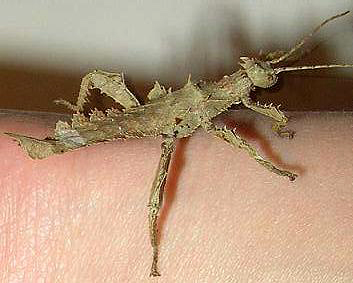 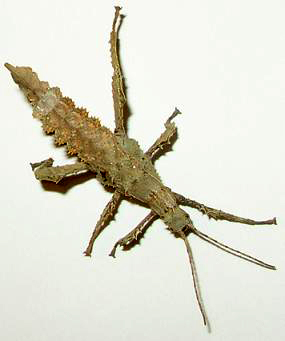
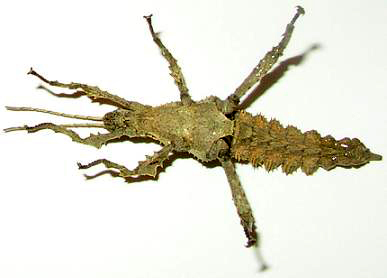
L2 female nymph.
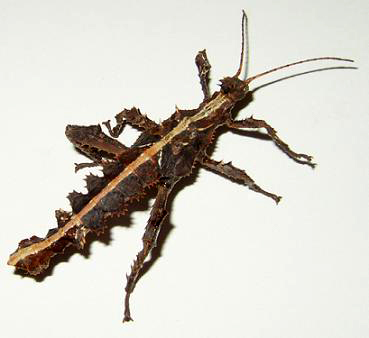
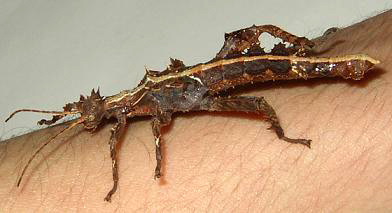
L3 male.
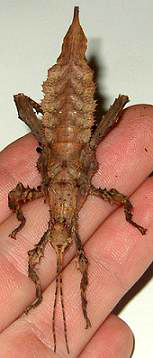
L3 female.
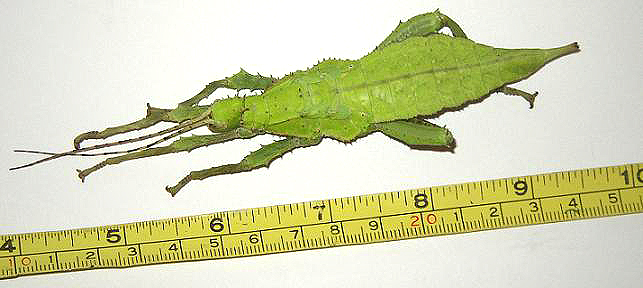
A female, two moults away from becoming an adult.
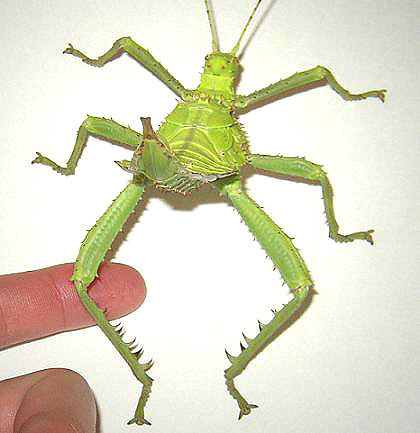
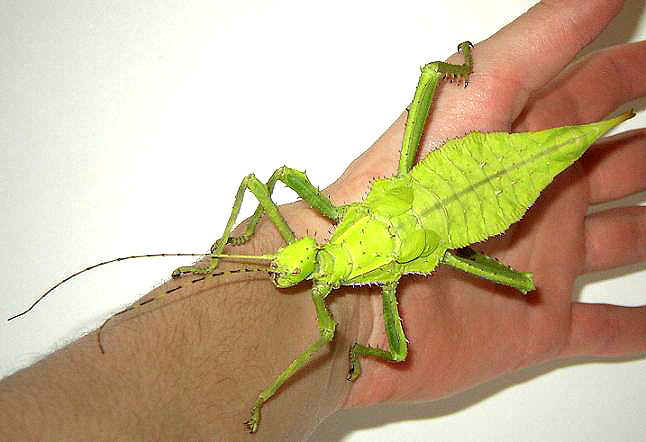
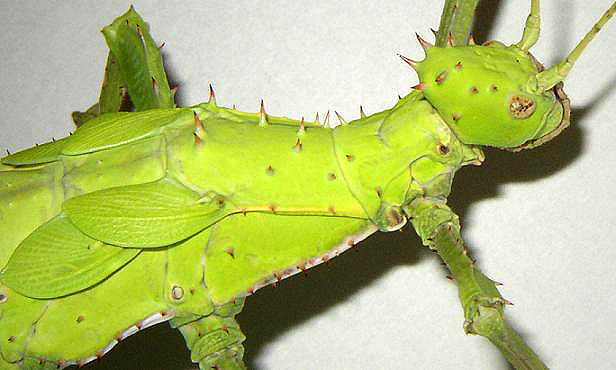
Subadult female, will become an adult on the next
molt.
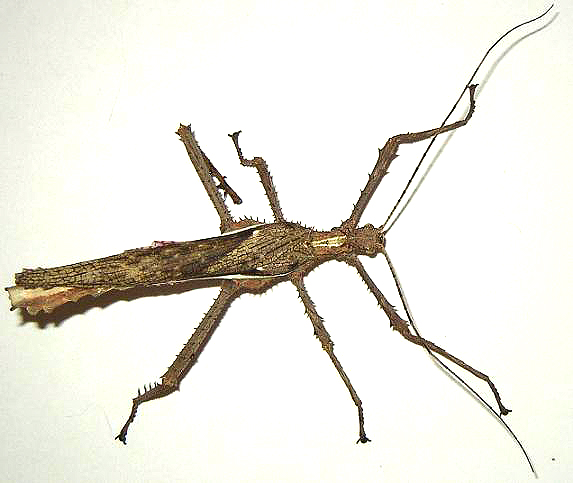
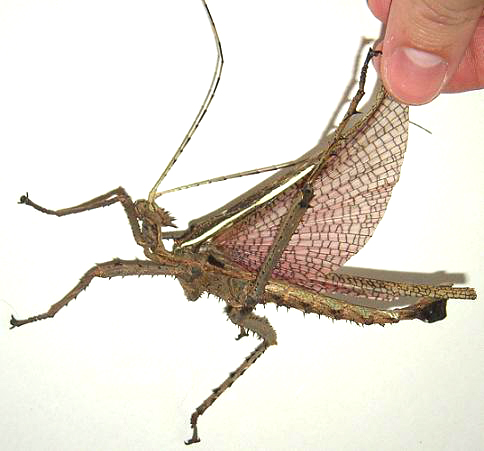
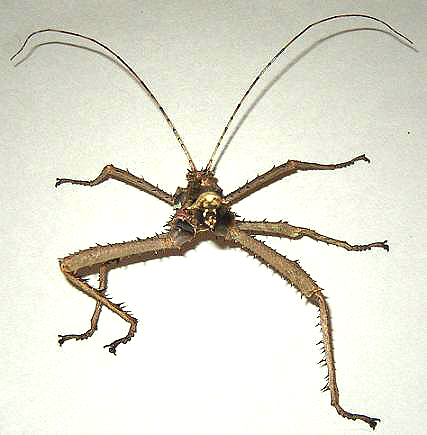
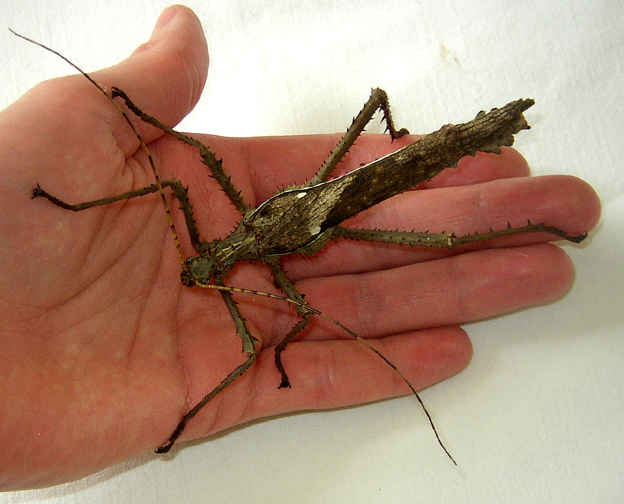
Adult male.
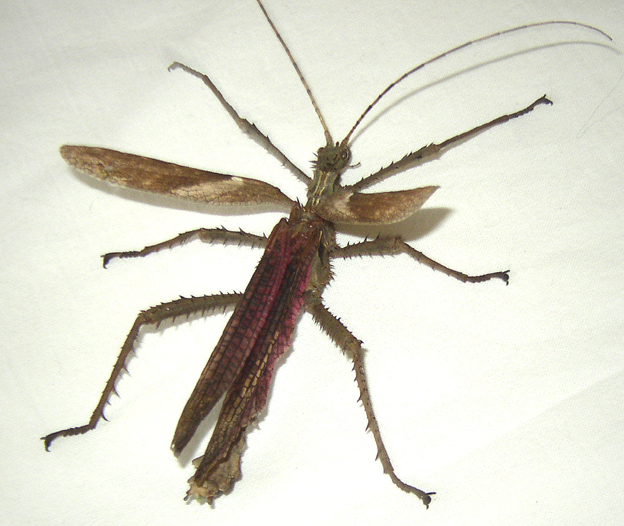
Adult male, just landed.
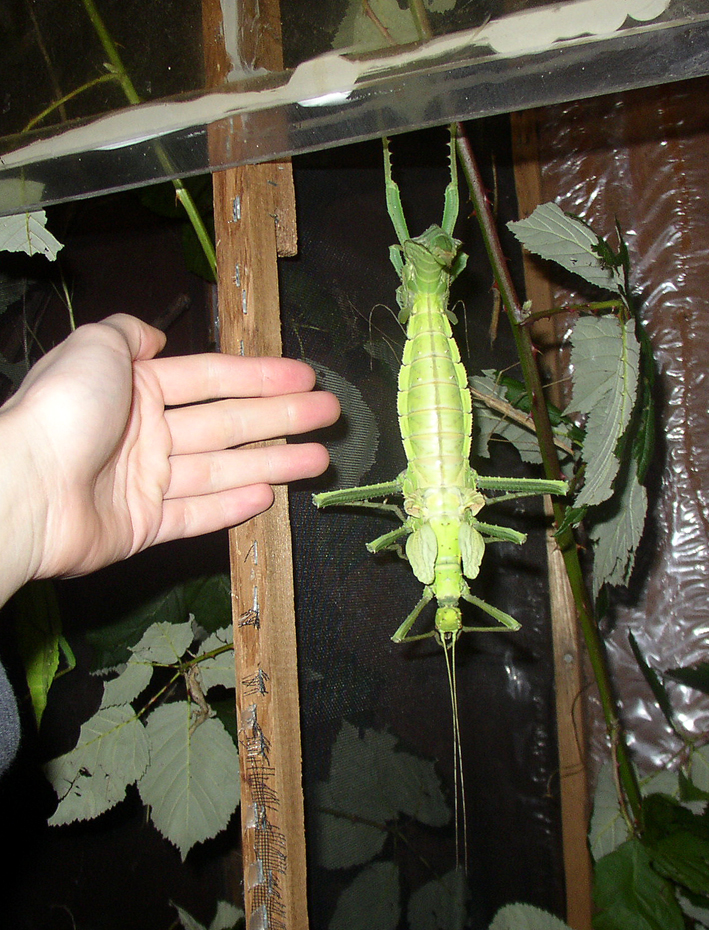
Sub-adult female, moulting into an adult stage.
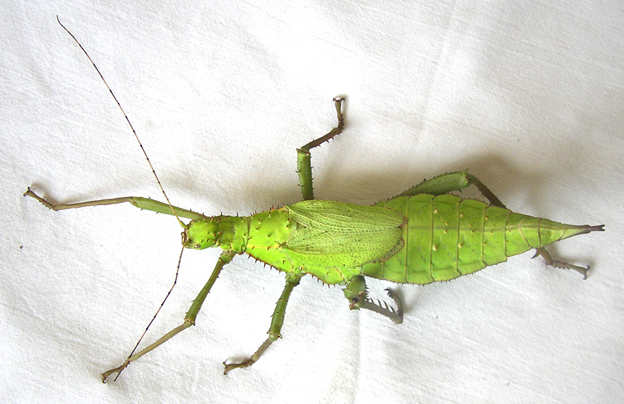
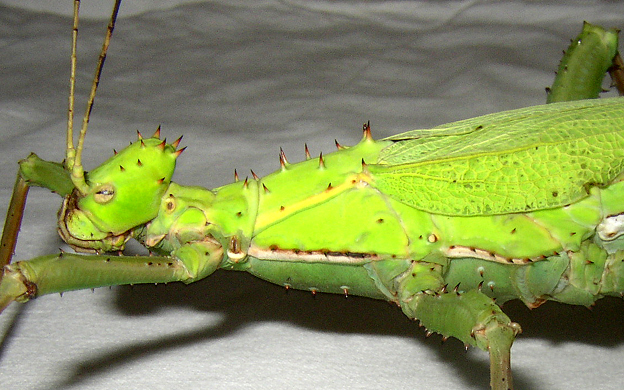
Adult female.
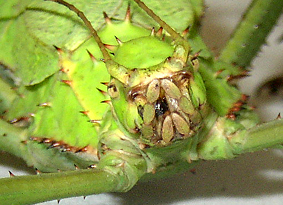
Adult female's mandibles.
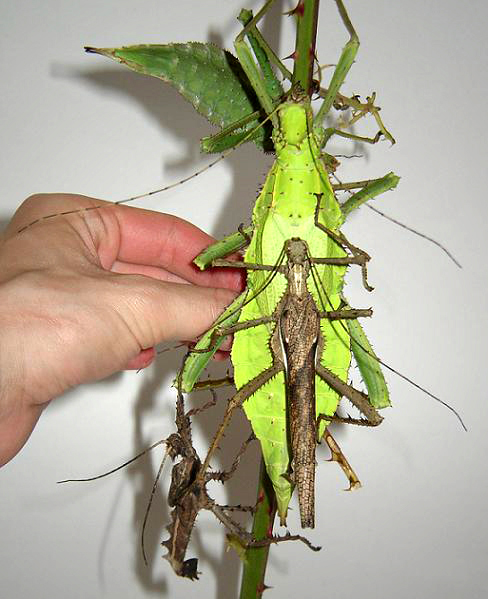
Adult pair, with a subadult male on the left.
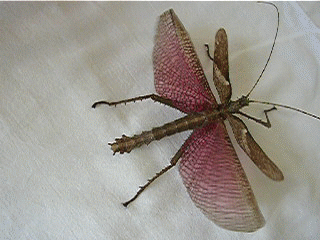
Male flapping his wing (please allow a few seconds
to load).
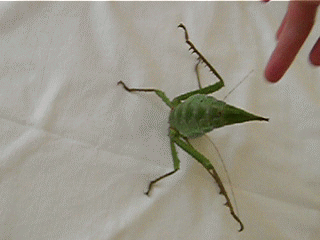
Female trying to pinch in defense mode (please
allow a few seconds to load). |